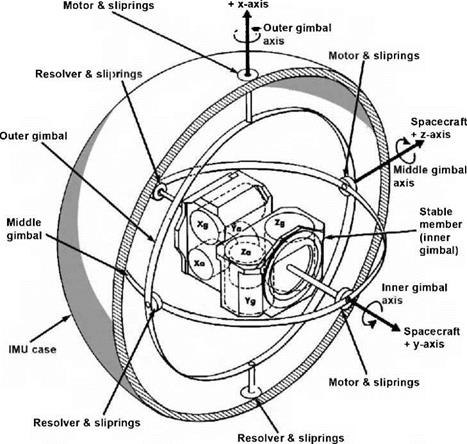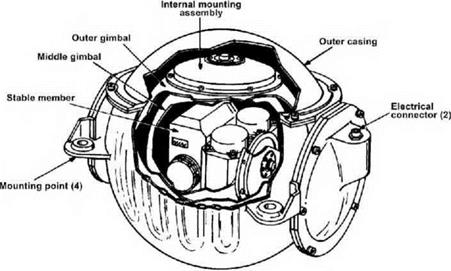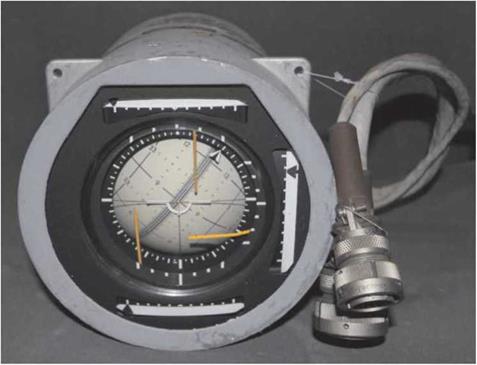Which way is up?
Here on Earth, we know, to the depths of our being, which way is up because gravity affects just about every action we Lake. In a spacecraft, any sense of direction that the crew– has is artificially imposed by their personal knowledge of the cabin, its layout and their view from the windows. Beyond that, there is no up or down in space. However, to get to a destination, the crew – must aim their engine correctly so that its thrust will act in the required direction. To achieve this, there must be some measurable definition of which way is w-hich; up. down, left, right, back, forward. In fact, there were many operations on board the Apollo spacecraft that needed some sense of direction – although not the same sense in all cases. Engineers had to provide a reference against which the spacecraft’s current orientation could be measured. Once again, the answer was in the stars.
Earth, the Moon and the rest of the solar system are, along with the other stars that make up the Milky Way galaxy, wheeling around the galactic centre at speeds that are literally out of this world, but it takes 250 million years to make one revolution. Although all these stars mostly move in roughly the same direction, each follows an independent path because it is tugged and pulled by the gravity of the stars around it. However, the galaxy’s size is immense; it takes many Lens of thousands of years for a light beam to travel across the galactic disk, and on the scale
|
Spacecraft
Schematic of the guidance platform and its supporting gimbals. (NASA) |
of humans and our meagre range of travel, the stars appear to be fixed points. Their distance is so huge and their apparent motion so slow that over a human lifetime even the closest ones hardly appear to move. Throughout the centuries of human exploration their seemingly static display has provided a useful ‘fixed’ reference against which progress across the surface of Earth could be metered. Apollo continued a long tradition of employing the stars for navigation.
We have already seen how the angular relationship between a star and a planet could be used to pin down a spacecraft’s position and velocity. The stars contributed in another essential way by helping to define direction. The magnitude of an engine burn was not the only important parameter to its success. It had to be fired with its nozzle (and hence the spacecraft) aimed in the right direction. Any appreciable misalignment during a burn would take the spacecraft off its intended course. Correcting for such an error would be wasteful of precious propellant and might put
|
Cutaway diagram of the inertial measurement unit. (NASA) |
the crew in jeopardy. The orientation of a spacecraft in space is known as its attitude (not to be confused with altitude) and, in an Apollo spacecraft, measuring attitude was the role of the inertial measurement unit (IMU).
Encased in a spherical housing a little larger than a soccer ball, the IMU consisted of three nested gimbals that supported a platform at their centre. Their arrangement isolated the platform from the spacecraft’s structure in such a way that the spacecraft could freely rotate up to a point and the platform would maintain its orientation in space. The platform carried three gyroscopes mounted orthogonally (at 90 degrees to each other). If a change in orientation was detected, the gyroscopes signalled motors to return the platform to its previous orientation. This arrangement ensured that as the spacecraft rotated this way and that, the orientation of the platform would remain the same, at least for a few hours. Encoders built into the axes of the gimbals could measure the attitude of the spacecraft relative to the platform’s orientation. These yielded three angles that told the computer in which direction the spacecraft was pointing.
The spacecraft attitude angles were displayed to the crew using the elegant (and elegantly named) flight director)attitude indicator (FDAI) which was more usually referred to as the ‘8-ball’. It was two instruments in one package, hence the dual name, and it is best to think of this as the spacecraft’s equivalent of the artificial horizon display found in the instrument panel of almost every aircraft. Its inclusion reflected the aviation background of the crews that flew Apollo. Usually, the ball at the centre of the display was driven to match the orientation of the platform. This was the ‘attitude indicator’ part of the instrument and if the spacecraft rotated, it would appear to do so around the 8-ball, mimicking the way it actually rotated around the stable platform. Graduations marked on the ball’s surface then allowed
|
A flight director/attitude indicator or 8-ball. (Courtesy Scott Schneeweis Collection/ Spaceaholic. com) |
the crew to read their current attitude off the display as degrees of pitch, roll and yaw. Needles in front of the ball formed the ‘flight director’ by indicating to the pilot which way he must rotate the spacecraft to attain an ideal attitude. Further meters and needles built around the 8-ball informed the crew how fast they were rotating. The reason for calling it an “8-ball” was a red disk on either side of the ball that gave it a superficial resemblance to the balls used in a game of Pool. This disk represented a range of attitudes that the spacecraft must avoid, of which more later.
Each spacecraft had two FDAIs on its instrument panel at the insistence of the crews, as David Scott recalled. “The thing we fly by, as pilots, is the attitude gyro – the 8-ball. And there was only one in Block I. And that’s key to what you do in all sorts of situations, and they didn’t want to put two 8-balls in Block II. We wanted a backup attitude gyro. As I recall, [James] McDivitt finally had to go to the [Apollo Spacecraft] Program Manager on behalf of the [Astronaut] Office, and say, ‘without two attitude gyros on the Block II spacecraft, we’re not going to fly it! That’s all. Want to put two in or not?’ And we got two 8-balls, which could not be justified technically – No way! – because they were reliable and there were other things to look at. But, from a pilot’s perspective, those were key.”
The IMU had another important function. As well as providing a reference against which the spacecraft’s attitude could be determined, its stable platform also provided an excellent base for the measurement of acceleration. Mounted alongside the gyroscopes on the platform were three accelerometers that detected changes in velocity along the three axes of the platform. Measurement of acceleration allowed the computer to calculate the effect of an engine burn.
The idea runs like this. Another way to think of velocity is that is it a measure of how fast you are changing position – it is your rate of change of position. Similarly, acceleration is a measure of how fast you are changing velocity. So if you start from a known point in space, measuring your acceleration will tell you how much your velocity has changed. Knowledge of your velocity will allow you to calculate how your position has changed, and position is an important element of the state vector. The IMU’s ability to measure acceleration accurately allowed the G&N system to update the state vector on an ongoing basis, and especially during engine bums. During a period of coasting, the state vector would be periodically determined by the ground or the crew.
In the realm of guidance and navigation, the IMlJ’s measurements only made sense if the computer knew which way the platform was orientated in space, i. e. which way was up, and this required some kind of external fixed reference. Neither Harth nor the Moon could be used because invariably the spacecraft was moving substantially with respect to both of these bodies. This was where the stars came in as the platform’s orientation was defined against a frame of reference for which they were the fixed points.













